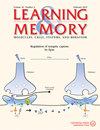高风险会减慢反应速度,但无助于克服人类的巴甫洛夫偏差
IF 1.8
4区 医学
Q4 NEUROSCIENCES
引用次数: 0
摘要
"巴甫洛夫 "或 "动机 "偏差是指预期结果的价值调节行动激励的现象:奖励的前景激励行动,而惩罚的前景抑制行动。预期结果的价值影响已得到证实,但结果的大小("利害关系大小")如何调节这些偏差仍不清楚。在这项预先登记的研究中(N = 55),我们在一个正交化的动机去/不去任务中操纵了赌注大小(高与低)。我们测试了较高的赌注是否会(a)加强偏差或(b)引起认知控制招募,从而在动机不一致的条件下加强对偏差的抑制。确认测试表明,高赌注会减慢反应速度,尤其是在动机不一致的条件下。然而,高赌注并不会影响是否做出反应,也不会改变巴甫洛夫偏差的大小。与数据拟合的强化学习漂移-扩散模型(RL-DDM)表明,赌注延长了不做决定的时间最能反映反应减慢的情况。利害关系对反应阈值没有影响(如典型的速度-准确性权衡)。总之,这些结果表明,高风险会减慢反应速度,但不会影响行为中巴甫洛夫偏差的表达。我们推测,这种高风险下的反应减慢可能反映了认知控制的增强,然而这种控制并没有得到有效利用,或者反映了积极的条件抑制,即目标导向行为和消耗性行为之间的干扰,这种现象以前在啮齿类动物身上观察到过,可能也存在于人类身上。巴甫洛夫偏差和高风险下的迟钝可能同时出现。本文章由计算机程序翻译,如有差异,请以英文原文为准。
High stakes slow responding, but do not help overcome Pavlovian biases in humans
“Pavlovian” or “motivational” biases are the phenomenon that the valence of prospective outcomes modulates action invigoration: the prospect of reward invigorates actions, while the prospect of punishment suppresses actions. Effects of the valence of prospective outcomes are well established, but it remains unclear how the magnitude of outcomes (“stake magnitude”) modulates these biases. In this preregistered study (N = 55), we manipulated stake magnitude (high vs. low) in an orthogonalized Motivational Go/NoGo Task. We tested whether higher stakes (a) strengthen biases or (b) elicit cognitive control recruitment, enhancing the suppression of biases in motivationally incongruent conditions. Confirmatory tests showed that high stakes slowed down responding, especially in motivationally incongruent conditions. However, high stakes did not affect whether a response was made or not, and did not change the magnitude of Pavlovian biases. Reinforcement-learning drift-diffusion models (RL-DDMs) fit to the data suggested that response slowing was best captured by stakes prolonging the non-decision time. There was no effect of the stakes on the response threshold (as in typical speed-accuracy trade-offs). In sum, these results suggest that high stakes slow down responses without affecting the expression of Pavlovian biases in behavior. We speculate that this slowing under high stakes might reflect heightened cognitive control, which is however ineffectively used, or reflect positive conditioned suppression, i.e., the interference between goal-directed and consummatory behaviors, a phenomenon previously observed in rodents that might also exist in humans. Pavlovian biases and slowing under high stakes may arise in parallel to each other.
求助全文
通过发布文献求助,成功后即可免费获取论文全文。
去求助
来源期刊

Learning & memory
医学-神经科学
CiteScore
3.60
自引率
5.00%
发文量
45
审稿时长
6-12 weeks
期刊介绍:
The neurobiology of learning and memory is entering a new interdisciplinary era. Advances in neuropsychology have identified regions of brain tissue that are critical for certain types of function. Electrophysiological techniques have revealed behavioral correlates of neuronal activity. Studies of synaptic plasticity suggest that some mechanisms of memory formation may resemble those of neural development. And molecular approaches have identified genes with patterns of expression that influence behavior. It is clear that future progress depends on interdisciplinary investigations. The current literature of learning and memory is large but fragmented. Until now, there has been no single journal devoted to this area of study and no dominant journal that demands attention by serious workers in the area, regardless of specialty. Learning & Memory provides a forum for these investigations in the form of research papers and review articles.
 求助内容:
求助内容: 应助结果提醒方式:
应助结果提醒方式:


